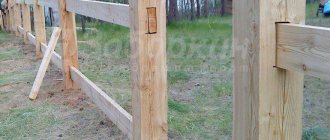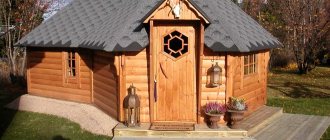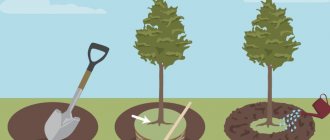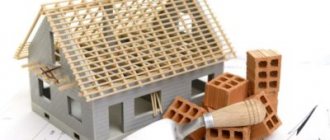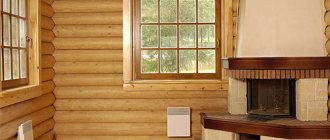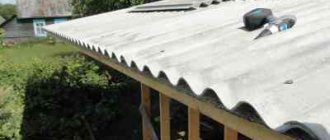The thuja plant has long been firmly established in the tools of landscape designers. It was only thanks to her that topiary art was discovered and developed. The intricately trimmed art objects are pleasing to the eye; they decorate alpine slides and form hedges. In this article we will look at what this plant is, how to choose a thuja for planting in the garden, and much other useful information.
What is thuja, characteristics
Thuja is an evergreen tree of the cypress family. Has many varieties. From dwarf trees - 30 cm high to trees 70 meters high. Gardeners love it for its frost resistance, beauty, and ease of care.
There are only five types of thuja:
- Western;
- Eastern or flat branch;
- Folded or giant;
- Standish or "Japanese";
- Korean.
The remaining varieties were bred by gardeners using species selection. In Russia, Japanese and Korean varieties are practically not grown due to the lack of frost resistance.
The main problems when growing coniferous trees
Caring for Thuja also includes pest and disease control. Fungal diseases cause the most trouble. For example, Fusarium, Cytosporosis. They affect shoots and needles of crops. To combat such diseases, Bordeaux mixture and Kartotsid are used. The treatment will be long-term, it is systematically repeated every 2 weeks. The end of therapy occurs only at the moment of complete recovery of the conifer.
Among the pests, the most dangerous are false scale insects or aphids. They can cause the needles to turn yellow and fall off. To eliminate such insects, it is better to use the drugs Rogor, Decis, Karbofos. The processing procedure begins before the buds open. The control method of treatment will be preventive spraying of trees with Actellik or Chlorophos. This procedure is performed at the end of June. The frequency of spraying is 2 times with an interval of 14 days.
This video talks about another Thuja pest - the Thuja pine beetle and how to deal with it
Advantages of growing thujas in a summer cottage
There are several advantages to choosing to plant thuja on your site:
- This evergreen plant will delight with its beauty both in winter and summer.
- Thuja has high decorative value. You can choose a plant of the desired shape. It can be used in landscape design as:
- tapeworm plant on an alpine hill;
- as a hedge;
- in the form of balls along the walking path;
- coniferous lawn of dwarf plants;
- as a delimiter of groups of plantings.
- A fairly versatile plant for different climatic conditions and light levels.
- The benefits come from the phytoncides and oxygen released by thuja, like all conifers all year round.
- The plant is unpretentious and does not require much labor to care for.
Selection of seedlings
Thuja of frost-resistant varieties is suitable for planting in Siberia. You will learn about resistance to low temperatures in advance using special correspondence tables. The speed of seedling development and the height of adult plants are also taken into account. To create alpine slides, dwarf varieties are suitable, characterized by minimal annual growth. They retain their crown shape for a long time and do not need frequent trimming. If seedlings are selected for hedges, select varieties with the same height at maturity. Then they do not lag behind each other in growth and form a dense composition.
Varieties of crops for the garden
Before deciding where to plant thuja in the country, you need to familiarize yourself with the varieties of the plant and choose the variety that is right for you. Thuja is often used in landscape design for landscaping gardens and parks as hedges and as tapeworms.
Mainly used varieties are obtained on the basis of:
- Western;
- Gigantic;
- Eastern.
Western
The tree grows up to 20 meters. The crown shape is initially pyramidal, but over time changes to oval. Emerald needles. It loves the sun and can survive drought, but also thrives in the shade.
From this species the following were obtained by selection:
- Thuja Smaragd . Low (up to 6 m in height) with a dense cone-shaped crown, which is often used in landscape design as a tapeworm.
- Brabant . A fast-growing tree in nature reaches a height of 40 meters. In the city it grows only up to 4 m. It tolerates frosts. The needles are light green. There is a variety called "Golden Brabant" with bright yellow needles that retain their color all year round.
- Aurea Nana . Long-lived shrub (no higher than 2 m). The needles are light green in color and very thick. In summer the ends of the branches are yellow, and in winter they are bronze.
Gigantic
Thuja foldata, “Giant”, “Red Cedar”, “Tree of Life” - all these are the names of the tallest variety of tree. Its height can reach 70 meters. The needles are green with white stripes on the reverse side. The crown is dense and spreading right down to the ground.
Examples of landscape design with thuja
Thuja fits harmoniously into different landscape designs. In a composition, the ephedra can be a central element or play the role of a background. With the help of this plant they decorate the entrance area or plant it in the form of an alley. In small areas, varieties with a pyramidal crown look good - Aurescens, Braband, Columna. It is also planted to improve city parks and areas near public buildings.
With hydrangea
Paniculata hydrangea looks especially beautiful next to the thuja. It has large inflorescences of white, pink or bluish tint. They add a bright note to the composition. Bright plants look great in combination with the dark greenery of conifers. Planting together is beneficial for both plants. Thujas protect hydrangea from pests and pathogenic microorganisms.
Important!
Hydrangeas need a lot of space to develop. It is planted at a distance of 2 to 2.5 m from other plants.
With bushes and other trees
When choosing a shrub for joint planting with conifers, take into account the characteristics of the roots. In thuja they are superficial. Plants with deep roots are suitable for their proximity. Joint planting with boxwood looks especially good. Both trees tolerate pruning well and look very impressive. Open areas are planted with low-growing shrubs and ground covers. Joint planting with rose bushes looks beautiful. Thuja varieties with spherical, compact crowns are especially suitable. They are planted at a distance of 1.5 to 2 m so that they do not compete for nutrients.
With perennials
Flowering perennials can act as companions for conifers. Alyssums, hostas, lavender, irises, viola, lobelia, periwinkle, delphinium, and petunia look good next to them. Bulbous plants look beautiful when planted together with thuja. For joint planting, choose bright crops with long flowering. They stand out as bright spots against the background of tall conifers and beautifully set off dwarf varieties. When planting thujas in the foreground, plants are planted next to them that do not lose their decorative effect after flowering ends - delphiniums or Volzhanka. If the conifer plays the role of a background, bright arabises or periwinkles are placed nearby.
How to choose seedlings for growing in the country
First you need to decide where to plant the thuja on the site. If in the shade, you will have to buy varieties “Brabant” or “Smaragd”. They do well in the shade and remain evergreen. (Golden Brabant in yellow).
For hedges or for planting along paths, seedlings of the following varieties are preferred:
- Brabant;
- Emerald;
- Holmstrup.
These plants have a columnar or pyramidal crown. As they grow, they create a continuous hedge, which is formed by shearing.
To obtain balls along the tracks, the Little Boy and Little Champion varieties are used. These plants grow quickly and form a perfect spherical crown. They can be grown in pots and flowerpots where they will become a stylish and effective decoration of terraces and paths in a park or garden.
When purchasing, inspect the seedlings. They should have needles of a rich green color. After compression, quickly restore its shape.
The plant must have a developed root system. If you buy it in a pot, grab it by the top and lift it, shake it - the pot should not remain on the ground.
Inspect the roots. They should not be soft and brown, but white with a pinkish tint.
Important: The size of the root system must correspond to the circumference of the crown.
Look at the bark and needles inside the crown. The bark should be smooth, and the needles should not be yellow or rusty. If there are mold stains, then the seedling grew in cramped conditions, in poor conditions.
Which type and variety is better to choose?
The rich assortment of shops and nurseries is tempting and attracts the buyer with the unusual shape of the crown, the color of the needles, and promises of no problems in caring for the tree. However, the colorful needles quickly fall off and the bush dies, despite the buyer following the growing tips. This means that the variety was not adapted to the conditions of the middle zone.
Important! When purchasing a seedling with a closed root system, gently pull the trunk. A specimen grown in a pot sits firmly and was not inserted by an unscrupulous seller before sale!
To increase the viability of thuja in your climatic conditions, be guided by the following rules when choosing:
- You can purchase seedlings only from a local producer; they are zoned, i.e., adapted to wintering in harsh conditions. Do not chase the cheapness of goods in spontaneous markets, check their origin;
- choose strong seedlings with a crown color characteristic of the variety, elastic and lively needles that do not fall off;
- give preference to the unpretentious classics - of all the variety, only frost-resistant folded, heather and western thujas will survive. They will easily tolerate long-term negative temperatures typical of the middle zone. They are not afraid of short-term summer droughts and shade;
- It’s difficult to choose from hundreds of species; decide in advance on your preferred shape, height and growth rate, and your search will narrow down.
Popular varieties of pyramidal and conical shapes that have proven themselves in central Russia include:
- medium-sized conical Smaragd;
- fast-growing Brabant;
- tall columnar Columna;
- low-growing heather Elvangera golden;
- spherical with transition to pyramidal Rheingold;
- ovoid with a transition to a cone, low Erikoides;
- miniature Kan-kan;
- large conical Sunkist;
- motley Zebrina.
The experience of growing spherical thujas in the Moscow region has replenished many ornamental gardening collections with interesting and durable specimens.
Among them:
- dwarf Danica;
- short Teddy;
- low Globoza;
- slow-growing Europa Gold;
- miniature Hosery.
Features of planting thuja
Despite its unpretentiousness, in order for the plant to quickly take root and begin to develop normally when planting, it is better to adhere to special agricultural techniques.
When is the best time to plant a crop?
The best time to plant thuja seedlings with an open root system will be the beginning of autumn. Although the plant is evergreen, this does not mean that it is not preparing for winter. Before frost there will be time for the roots to recover from the stress of replanting. In spring they plant only very early, as soon as the snow melts. During the growing season, plants become weakened. If you replant them at this time, there is a chance that the seedlings will not take root.
Important: Potted seedlings are planted in open ground at any time from spring to mid-autumn.
What should the soil be like?
The soil where to plant thuja in a summer cottage can be any, but not too acidic. Slightly acidic, neutral or slightly alkaline will do.
Choosing a place for thuja
The place where it is better to plant thuja on the site can be on the sunny side (adults are not afraid of drought) or not very shaded. Definitely no drafts. Simultaneous exposure to an open, sunny place and a draft will lead to plant disease.
Planting technology
Before planting thujas in the garden plot in the spring, a hole is dug in size corresponding to the earthen ball around the roots. Drainage is done at the bottom - a number of large stones are laid. Phosphorus-potassium fertilizers are applied. A mixture of leaf soil, peat, and sand is poured onto it in a ratio of 2:1:1. When planting, the root collar should not be below ground level. After planting, the plant is watered abundantly every 2-3 days. After 2 years, pruning is carried out.
Diseases and pests
In the spring, the color of the bark of some conifer specimens changes to brown. This is how a fungal infection manifests itself. First, the bark turns yellow, then the lesion affects tissues located deeper. Over time, the branches die off. To eliminate the disease, the plant is sprayed in spring or summer with a solution of the drug “Fundazol” at a concentration of 3%. Before processing, all infected parts are cut off and burned.
Young plants develop rust from a lack of nutrients, too hot weather or high humidity. To improve the health of trees, they are sprayed with a solution of the drug “HOM”, prepared at the rate of 40 g of substance per 10 liters of water. Damaged areas are first removed.
With Schutte fungal disease, the needles acquire a darker shade and then fall off. The disease develops due to a deficiency of nutrients in the soil and poor care. To improve the health of the tree, it is sprayed with a solution of the drug “Topsin-M”, prepared from 10 liters of water and 15 g of the substance. Bordeaux mixture is also used instead.
Important!
The most dangerous disease of thuja is late blight. Infection develops from the roots. In a sick tree, the needles take on a gray tint, and plant tissues become loose. There is no cure for this disease. Therefore, infected specimens are immediately dug up and destroyed.
The main pests of thuja are:
- Thuja aphid feeding on plant sap. It causes yellowing and shedding of needles.
- Spider mites provoke the appearance of yellowish spots on the needles and their shedding. The pest is most active in dry weather.
- The moth gnaws tunnels in plant tissue. When infected with a parasite, the needles turn brown and fall off.
- False scale insects provoke wilting and drying out of the plant.
- The wireworm attacks the root system. The infected plant stops growing and dies over time.
- Bark beetles feed on bark and lay their eggs in it. After infection with the parasite, the plant gradually withers and dies.
To combat all insects, trees are sprayed with insecticide solutions. Treatments are carried out several times with an interval of 15 days. If there are few pests, use folk remedies: soap and tobacco solution, garlic water, ammonia.
Procedures for caring for thujas in the garden
Despite the fact that thuja is unpretentious, if you don’t take care of it at all, you will end up with yellowed or blackened bushes.
After winter, the plant is weak and at this moment you should take care of it. The soil around the trunk needs to be cleared of grass and loosened.
How often to water
Watering should begin in April, and in the southern regions in March. Under the sun, moisture evaporates rapidly and must be replenished. In the spring, thuja is watered once a week with a bucket for each tree. The soil is also sprinkled weekly.
Advice: In summer, during hot weather, increase the frequency to twice a week.
How to fertilize a tree
Fertilizers are applied immediately after the snow melts. These can be either organic or special for coniferous plants. Before fertilizing, you need to water and mulch the soil well so that everything is well absorbed. Dilute the fertilizer according to the volume of water strictly according to the instructions. Excessive amounts can destroy the plant.
How to deal with thuja diseases and pests
Thuja can get sick and suffer from pests.
The most common diseases:
- brown shutte;
- pestalocyopsis necrosis;
- Kabatina necrosis;
- Phomopsis necrosis.
The most common pests:
- thuja aphid;
- digitalis moth;
- bark beetle;
- spider mite
To prevent infection, it is necessary to periodically inspect and treat with special means at the first signs of infection.
Nuances of preparing for winter
In the fall, stop feeding and prepare the plant for wintering:
- connect the branches;
- Spreading and crooked branches are pruned;
- mulch the soil;
- covered with an airtight cloth.
Care
Coniferous species are undemanding and do not require a complex set of care measures. At the same time, young seedlings are more vulnerable and therefore require attention and care. The endurance characteristic of thuja manifests itself in adult specimens; before this, it will be necessary to create and maintain an optimal microclimate and provide the plant with the necessary nutrients.
Thuja care includes:
- watering;
- moisturizing the aboveground part;
- mulching;
- pruning;
- feeding;
- preparation for winter;
- protection from diseases and pests.
Coniferous species are undemanding and do not require a complex set of care measures.
Watering
The culture is moisture-loving. Species representatives are able to grow even in swampy conditions. Decorative forms are less hardy. Therefore, excess moisture is poorly tolerated. At the same time, the needles of the plant require a sufficient supply of water, otherwise they dry out and branch fall begins - a phenomenon characteristic of this coniferous species.
Watering thuja depends on weather conditions. In hot weather, it is recommended to moisten the soil every 3–7 days. For adult specimens, once a month is sufficient. There is no need to adhere to strict rules; it is more important to look at the condition of the plant. Rotting indicates an excess of liquid, while lethargy and dry shoots indicate a lack. Sprinkling has a beneficial effect on the decorative appearance of the crown. In summer, it is advisable to periodically water the above-ground part from a watering can in the early morning or in the evenings. During the dry season, the procedure can be carried out daily. This will wash away the dust from the needles, reveal the natural color of the thuja, and enhance the specific phytoncidal aroma.
On a note! It is recommended to carry out moisture-recharging irrigation in late autumn and early spring. Thanks to this, the plant will overwinter well, and then quickly wake up and adjust to a new regime.
The culture is moisture-loving.
Trimming
The first procedure is possible immediately after planting the thuja in open ground. Subsequent operations maintain the shape, but more than a third of the young growth should not be removed. Direct pruning of coniferous trees is carried out in spring and autumn. In summer, people mostly do sanitary haircuts.
Tips for shaping the thuja crown:
- a thick and lush aerial part will form if you regularly pinch the upper shoots;
- spring haircut is often sanitary, autumn haircut is required to prepare for winter;
- formative pruning is easier to tolerate 3–4 years after planting in open ground;
- with a spherical crown, bare branches without needles may remain. It is undesirable to leave them, since there are no dormant buds, the shoot will simply dry out;
- depending on the thickness of the branches, choose a tool: scissors, pruning shears, hedge trimmer;
- pruning should be carried out with sharpened and disinfected equipment;
- the best time is evening or cloudy day;
- After surgery, abundant watering is required.
On a note! When pruning, thuja releases resin on damaged branches, which is difficult to wash off from skin and fabric, so it is advisable to carry out the procedure in protective clothing and gloves.
Direct pruning of coniferous trees is carried out in spring and autumn.
Top dressing
Over time, the nutrient layer of the soil is depleted, macro- and microelements are absorbed by the root system of the plant. As a result, the soil in the garden cannot provide enough nutrition to the growing tree or shrub. It is recommended to plant thuja in a substrate enriched with nutrients. For this reason, the need for additional feeding does not appear immediately.
The need to apply fertilizer is determined by the condition of the plant. Any symptoms of element deficiency are an indication for an unscheduled procedure. Fertilizing must be combined with watering so that the high concentration of nutrients does not harm the root system. In the spring, it is recommended to use ammonium nitrate, superphosphate, urea, and magnesium and potassium supplements for these purposes. Rooting stimulants will be required if the thuja is damaged in winter by frost, snow or wind.
In summer, feeding is required only when there are symptoms of a deficiency of a certain element, dry needles. The adverse effects of scorching sun rays will be reduced by spraying the aboveground part with a weak solution of Epin or Zircon. In autumn and winter, you should be careful with the procedure so as not to provoke bud formation and the growth of young shoots. When preparing for winter cold, it is permissible to water the plant with a dissolved mixture of potassium-phosphorus fertilizer. This will help the tree cope with the upcoming worsening weather conditions.
In summer, feeding is required only when there are symptoms of a deficiency of a certain element, dry needles.
Preparing for winter
One of the qualities of thuja is frost resistance. This can create the false impression that the plant will overwinter without problems even without prior preparation. Actually this is not true. Resistance to cold appears only with age; young seedlings require protection from frost. In addition, varieties have different characteristics, some are not intended for cold climates. Also, low temperatures are not the only danger. Thuja can suffer from heavy snowfall, strong winds, and aggressive sun in early spring.
Recommendations for preparing coniferous trees for winter:
- Water-recharging irrigation with additional application of complex fertilizer without nitrogen.
- Mulching the tree trunk circle with improvised material in a layer 7–10 cm thick.
- It is advisable to tie columnar varieties with a net or rope so that the branches do not break off under the weight of snow.
- In the first year after planting, young seedlings need to be protected from freezing with spruce branches.
- It is prohibited to use film and other materials that do not allow air to pass through. This will lead to rotting of the thuja.
- To protect from the sun, use roofing felt, gauze, craft paper, and white cotton fabric.
- Special covering materials (agrofibre, spunbond) allow air and UV rays to pass through, so they do not help protect the needles from sunburn.
Resistance to cold appears only with age; young seedlings require protection from frost.
Planting thuja requires following basic tips and recommendations. This will allow the plant to quickly take root and begin to grow. Decorative garden forms of coniferous species are less resistant to adverse environmental factors, therefore, when planting, they require additional nutrition, as well as proper subsequent care.
How to prune a plant correctly
For trees to grow normally and look beautiful, periodic pruning is required. It comes in two types:
- sanitary;
- curly.
When to do it
Sanitary pruning is carried out in early spring and late autumn.
Pruning is carried out in the following cases:
- frost damage to wood;
- damage by pests;
- the appearance of diseases;
- formation of dry branches or dead needles.
Forming is done periodically throughout the summer, when some branches are knocked out of shape.
Ways to cut thuja
To trim thuja, use the following tool:
- scissors (with long handles for easy cutting);
- pruner;
- hacksaw;
- brush cutter (if there are a lot of bushes and trees, an electric one is recommended).
Procedure for pruning a tree
When pruning thujas they often make three mistakes:
- Heavy pruning . At one time, you can cut off no more than 30% of the mass.
- Bare branches . Deciduous trees easily grow green mass, while coniferous shoots dry out.
- Shoots should not be trimmed close to the buds . The optimal distance is 2 cm from the kidney.
Methods of culture propagation
There are two ways - seeds and cuttings.
How to propagate thuja with seeds
The advantage of this method is:
- obtaining a large amount of seed material with identical parameters;
- Plants grown from seeds will feel normal on this soil in these climatic conditions.
Important: The disadvantage is the duration of the operation. Planted seeds will reach the seedling planting date in 4 years.
Another disadvantage may be the loss of varietal characteristics of the mother specimen.
The procedure for collecting seeds is simple. In the second half of August or early September, cones that are already colored brown are collected. You can cut them off with part of the shoot. It is important to collect them before the cones open and the seeds spill out.
The collected cones are laid out on a sheet of clean paper and wait for them to dry and open. Such seed material can also be purchased in stores.
The collected seeds are subjected to stratification (thermal training). To do this, wrap it in a cloth and bury it in the ground, covering the place with a pile of fallen leaves or sawdust. In the spring, they dig it up, put it in a jar, cover it with damp sand and close it with a lid, hide it in the refrigerator for several months. You can immediately put it in the refrigerator without burying it in the ground.
Planted both in spring and autumn. You can directly into the ground on the site or as seedlings in containers.
Soil for coniferous plants is disinfected with a solution of potassium permanganate.
Plant in rows, at a distance of 5-6 cm from the row (this is done so that the plants do not intertwine their roots and interfere with each other). When the soil has reached a temperature of at least 12o.
Tip : Before planting, keep the seeds in warm water overnight.
The bed with the planted thuja seeds is covered with sawdust.
The containers are covered with glass and placed in a heated place. After germination, immediately remove to a cool place. The glass is periodically removed and irrigated. They can withstand up to 40 days to be able to exist without shelter. Seedlings are grown on windows, choosing the north or west side. The temperature should be 17-23oC, in winter – 15o. Seedlings for planting on the site should grow to approximately 50 cm.
Growing a tree from cuttings
The instruments are first disinfected. Cut off the semi-lignified top of a young thuja, 30-40 cm long. In adults, the upper shoots are 25-30 cm long.
From the cut shoots, the green shoot is cut off along with the “heel” (a piece of wood from the mother tree). The cuttings are immersed in a container with a root formation stimulator for 6-12 hours. During this time, the soil and containers for planting are prepared.
Thuja cuttings are planted with a slope of 30-45o to a depth of 2 to 4 cm. The containers are placed in a greenhouse. Create conditions of 80-90% humidity. Protect from direct sunlight, rain, drying out and drafts.
On a note! The root system is formed after 2 months, and then they can be transplanted into pots or grown into a garden bed.
What to look for when choosing a plant?
In order for evergreen vegetation to delight you with its beauty, growth and development, the first thing you should pay attention to is the quality of the soil and the illumination of the site.
Next, you need to take into account the weather conditions in the region, the amount of precipitation and the minimum air temperature in the winter season. Based on these parameters, the type of tree is already selected.
How to use thujas in your garden landscape
Thuja has many uses in landscape design. Basic:
- hedge - will create a noble natural screen;
- a rock garden with thujas will be the pride of the owners;
- in the form of balls along the walking path;
- coniferous lawn of dwarf plants;
- to separate groups of plantings.
In the 19th century, a trend developed in France - trimming thuja in the shape of various art objects - geometric shapes or figures of people and animals. The art is called topiary. How to plant thujas on your site is up to you to decide. By showing a little imagination and creativity, with the help of these plants you can create a unique landscape design in your backyard that will delight you and your friends.
Usage
The popularity of thuja is understandable: its variety and shape diversity allows it to be used in landscape compositions of any style. Having an attractive appearance, this breed is unpretentious, tolerates urban conditions well, is very frost-resistant, and lends itself well to haircuts. This set of positive qualities is enough to win everyone’s love and respect.
In 1566, his subjects from distant America brought the richest gifts to the French king: gold, clothing, Indian arts and crafts, the fruits of strange overseas plants and a slender coniferous tree with unusual scale-like leaves, spreading a pleasant aroma of resin. This exotic plant has taken root well in the climate of France. He tolerated the haircut perfectly, which made it possible to enrich the royal park with a variety of topiary figures. The French king appreciated the new plant and called it the tree of life , because its evergreen, fragrant needles enlivened the garden all year round.
This is how the thuja occidentalis acquired a second home in Europe. This magnificent slender tree, 12–20 m high, has a compact, low-hanging pyramidal crown.
| See also: |

